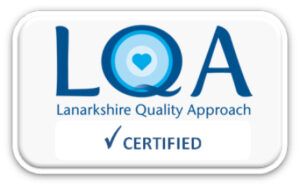Ferric Carboxymaltose (Ferinject) Intravenous Iron transfusion
Information for patients
NHS Lanarkshire Maternity Department
PIL.FERRIC.21_11192.W
- blood tests show you are anaemic (low blood count) and this has not responded to oral iron tablets, or the iron tablets you’ve taken have made you feel unwell
- you have significant anaemia after the birth of your baby, causing you to feel unwell
- you decided not to have a blood transfusion, for example if you are a Jehovah’s Witness
Your doctor may suggest Ferric Carboxymaltose and then discuss this with you.
Using Ferric Carboxymaltose instead of blood
Ferric Carboxymaltose is not a blood product. Although a blood transfusion is safe, there are some risks, including a tiny risk of infection.
Ferric Carboxymaltose does not have the infection risks of blood transfusion.
Safety of Ferric Carboxymaltose
Ferric Carboxymaltose is considered safe to use after the first trimester (three months) of pregnancy and after you’ve had your baby. Rarely (in under 1% of cases) it can cause allergic reactions. You will therefore be monitored closely before, during and after the infusion.
A rare but significant complication of Ferric Carboxymaltose is permanent skin staining or discoloration, which can occur if some of the drug leaks outside the vein during the infusion. To reduce the risk, a flush of water or saline (salt solution) is given into your vein before the Ferric Carboxymaltose.
Please let the midwife know if you experience any pain or burning in the arm during the infusion.
Very little Ferric Carboxymaltose crosses into breast milk so you can safely breastfeed.
Side effects
Mild side effects may occur in 1 to 10% of patients, including headache, dizziness, rash, nausea and vomiting, abdominal pain, muscle cramps, diarrhoea, constipation, abnormal liver function, flushing, low or high blood pressure and injection site reactions.
Receiving Ferric Carboxymaltose
Ferric Carboxymaltose can be given at the obstetric day unit. Sometimes it is given during an in-patient admission.
When you arrive the midwife will take your pulse, blood pressure and temperature. Next the midwife or one of the doctors will put a drip in your arm and start the Ferric Carboxymaltose infusion. This usually takes about 15 minutes via the drip.
Afterwards the midwife will check your pulse, blood pressure and temperature again. Usually you can go home 30 minutes after the Ferric Carboxymaltose has finished, unless you feel unwell.
Your blood haemoglobin level will be checked before you give birth if you are still pregnant. If you have already given birth, you may need to take oral iron tablets.
Oral iron tablets
You must not take oral iron tablets for 5 days after having Ferric Carboxymaltose. You should only restart taking the iron tablets
after 5 days.
Suitability of Ferric Carboxymaltose
You should not have Ferric Carboxymaltose if you:
- have anaemia caused by deficiencies other than iron deficiency (for example B12 deficiency)
- have ever been told by a doctor that you have “iron overload”
- have ever had an allergic reaction to iron given to you through
a drip - have ever had a problem with your liver, such as liver cirrhosis or hepatitis
Further information
If you have any questions after reading this leaflet please let your midwife or doctor know.
They will be happy to discuss them with you.

Review date: June 2023
Issue No: 01
Reference: PIL.FERRIC.21_11192.W
If you need this information in another language or format, please e-mail:




